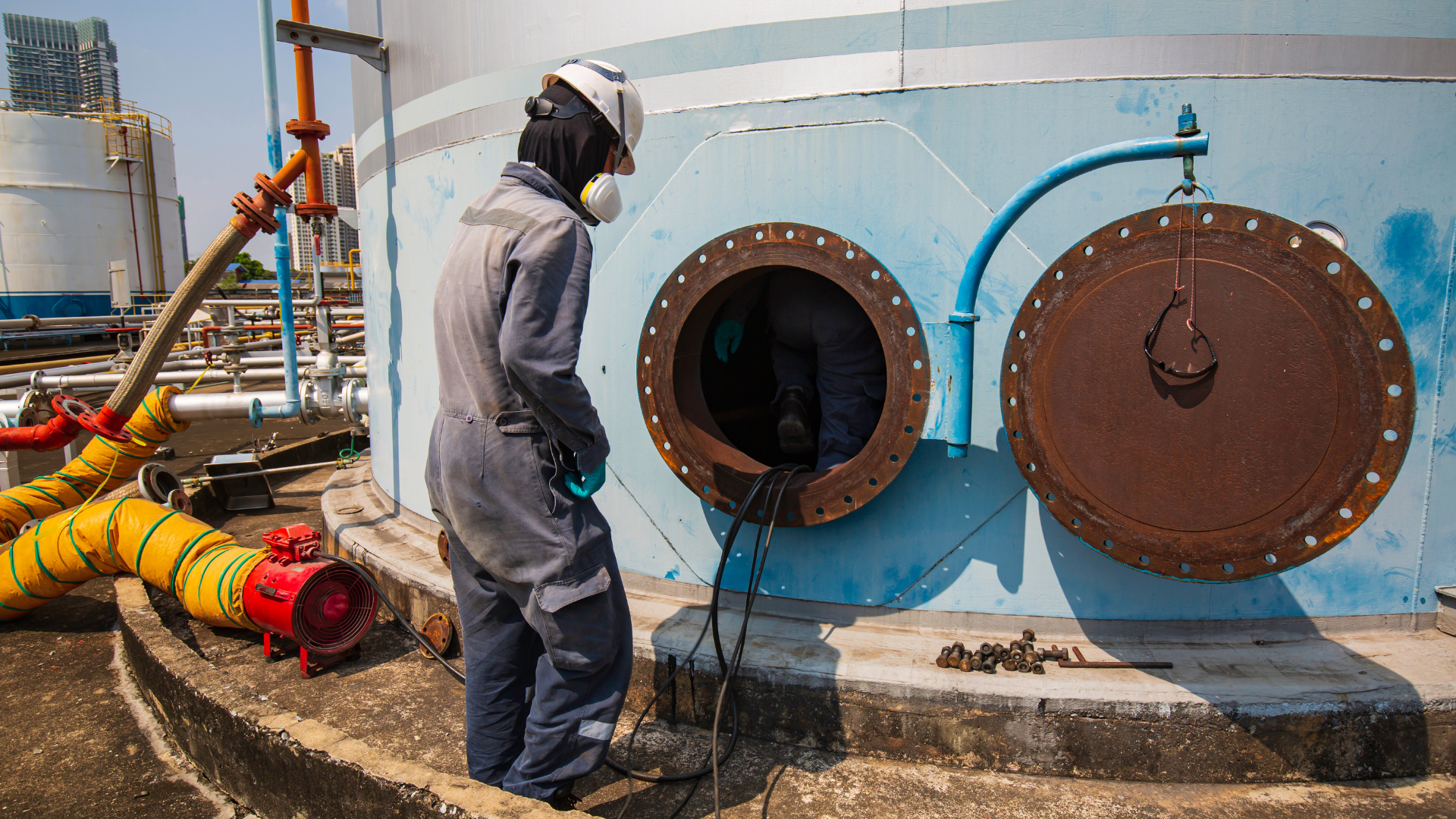How Often Should Atmospheric Testing Be Done in a Confined Space?
by Emilia Dudova, on Mar 26, 2024 11:54:12 AM

Confined spaces, defined by their limited openings for entry and exit, and not designed for continuous employee occupancy, pose unique challenges and risks. The potential for hazardous atmospheres, oxygen deficiency, or other harmful air contaminants makes atmospheric testing not just a precaution but a necessity.
But how often should these tests be conducted to ensure safety without compromising operational efficiency?
Understanding Confined Spaces and Their Risks
Confined spaces might include tanks, vessels, silos, storage bins, hoppers, vaults, pits and other enclosed spaces. The potential hazards associated with these spaces are primarily due to inadequate air ventilation, which allows for the accumulation of atmospheric hazards such as toxic gases and the potential for oxygen deficiency or enrichment.
The Crucial Role of Atmospheric Testing
Atmospheric testing is the first line of defense against the invisible threats within confined spaces. It involves evaluating the air within the space for oxygen levels, flammable gases and vapors, and potential toxic air contaminants. This testing is essential not only before entry to ensure the space is safe but also during work to monitor for any changes in atmospheric conditions.
Determining the Frequency of Atmospheric Testing
The frequency of atmospheric testing in confined spaces should be determined by several factors, including: results of the hazard assessment conducted prior to any work as well as the control measures implemented.
1. Pre-Entry Testing
At a minimum, atmospheric testing must be conducted before entry into a confined space. This pre-entry testing ensures that the environment is safe for workers and identifies any need for ventilation or other corrective actions before work begins.
2. Continuous Monitoring
For confined spaces where occupancy is prolonged or where conditions could change rapidly, continuous atmospheric monitoring is essential. This could mean constant testing using portable or fixed atmospheric gas monitors to ensure that conditions remain within safe parameters throughout the duration of the work.
3. Periodic Re-testing
In situations where continuous monitoring is not feasible, periodic re-testing should be conducted at regular intervals. The frequency of these tests should be based on the nature of the confined space, the work being performed, and the likelihood of atmospheric changes. Typically, re-testing might be scheduled every hour or at shift changes, but more frequent testing may be necessary in volatile environments.
4. Following Any Incident or Change in Conditions
If there is any indication of a change in the conditions within the confined space, such as a spill or release of combustible gases, atmospheric testing should be immediately conducted. Similarly, if the monitoring equipment signals a shift outside of safe parameters, work should be halted, and the space re-evaluated.
Best Practices for Atmospheric Testing
To ensure the effectiveness of atmospheric testing in confined spaces, employers should adhere to the following best practices:
- Use appropriate and calibrated testing equipment capable of detecting the specific hazards that may be present in the confined space (e.g. Carbon Monoxide, Hydrogen Sulfide, etc.)
- Train confined space workers thoroughly on the correct use of testing equipment and the interpretation of results.
- Document all test results meticulously, including the time, date, tester, and specific readings for each atmospheric test.
- Develop and enforce strict entry procedures based on the outcomes of atmospheric tests, including the use of personal protective equipment (PPE) and emergency response plans.
Atmospheric testing in confined spaces is a critical component of workplace safety that protects employees from unseen dangers. While the exact frequency of testing will vary depending on specific circumstances, adhering to the principles of pre-entry testing, continuous or periodic monitoring, and re-testing after any change ensures a robust defense against the hazards of confined spaces. By embracing these practices, employers can create a safer working environment, minimizing the risk of accidents and enhancing overall operational safety.
.png?width=162&height=64&name=IRWINS%20website%20logo%20(1).png)